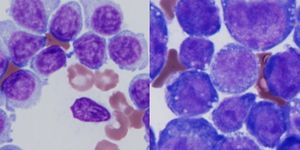Just a couple of miles down the road from North Carolina State University where CRISPR pioneer Rodolphe Barrangou, PhD, has his lab, scientists at Duke University are modifying the genetic modifying technique to directly activate existing gene copies in the genome rather than adding additional copies. The result? A complete reprogramming of a cell’s identity.
In the past, scientists have used viruses, injected into the genome, to introduce extra copies of certain genes to produce a large number of “master transcription factors” in order to induce a permanent change in the cell’s gene network. However, after realizing that a temporary signal that could change the cell type to reach a stable destination would be more effective than making irreversible changes, the research group from Duke decided to tweak current CRISPR technology to create a temporary signal.
In their study, the researchers used a “splice-less” version of CRISPR to identify specific regions of DNA and attach them to a gene activator to activate exactly three genes. (For more about CRISPR gene editing technology, click
here.) The three genes they activated naturally produce the master transcription factors in the cell’s genome responsible for controlling the neuronal gene network. Activating the network in this manner created newly-converted neuronal cells with a more complete and persistent conversion profile than with techniques using viruses.
Using this version of CRISPR technology to convert isolated mouse connective tissue cells directly into neuronal cells could be applied to modeling neurological disorders, discovering new therapeutics, developing personalized medicines, and even implementing cell therapy, researchers report. Duke scientist Charles Gersbach provides an example:
“We might have a general idea of how most people's neurons will respond to a drug, but we don't know how your particular neurons with your particular genetics will respond. If we could take a skin cell from your arm, turn it into a neuron, and then treat it with various drug combinations, we could determine an optimal personalized therapy."
The experimental method in this study pose a challenge to scientists: producing stable neuronal cells efficiently while also ensuring their genome looks like a “real” neuron. In the future, Duke scientists plan to apply this technology to isolated human cells as well as improve the technique’s efficiency and apply it to model particular diseases.
This study was recently published in the journal
Cell Stem Cell.
Source:
Duke University









